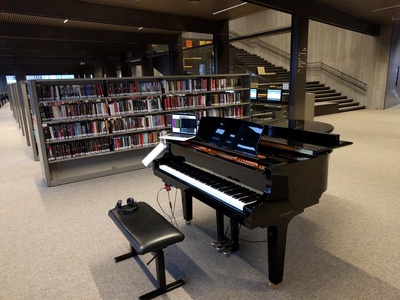~ trix: Realtime audio over IP
» By Joren on Wednesday 13 March 2019At work we have a really nice piano and I wanted to be able to broadcast a live performance over the internet with low latency to potential live listeners. In all honesty, only my significant other gets moderately lukewarm about the idea of hearing me play live. Anyhow:
I did not find any practical tool to easily pump audio over the internet. I did find something that was very close called trx by Mark Hills: trx is a simple toolset for broadcasting live audio from Linux. It unfortunately only works with the ALSA audio system and is limited to Linux. I decided to extend it to support macOS and Pulse Audio. I also extended its name to form trix.
Audio Transmitter/Receiver over Ip eXchange (trix) is a simple toolset for broadcasting live audio from Linux or macOS. It sends and receives encoded audio over IP networks, via an audio interface. If audio interfaces are properly configured, a low-latency point-to-point or multicast broadband audio connection can be achieved. This could be used for networked music performances. The inclusion of the intermediate rtAudio library provides support for various audio input and outputs.
More information on trix can be found on the trix github page.
Latency
The system can be configured for low latency use. The whole chain is dependent several different components which each add to the total latency: audio input latency, encoder (algorithmic) delay, network latency and finally audio output latency.
Thanks to the use of RtAudio it should be possible to use low latency API’s to access audio devices (ASIO on windows or Jack on Unix). This means that audio input and output latencies can be as low as the hardware allows. The opus encoder/decoder that is used has a low algorithmic delay. By default it has a 25ms delay but it can be configured to only 2.5ms (see here). The network latency (and jitter) is very much dependent on the distance to cover. On a local network this can be kept low, when using wide area networks (the internet) control is lost and latencies can add up depending on the number of hops to take. Jitter can be problematic if the smallest possible buffers are used: then dropouts might occur and this might affect the audio in a noticeable way.

